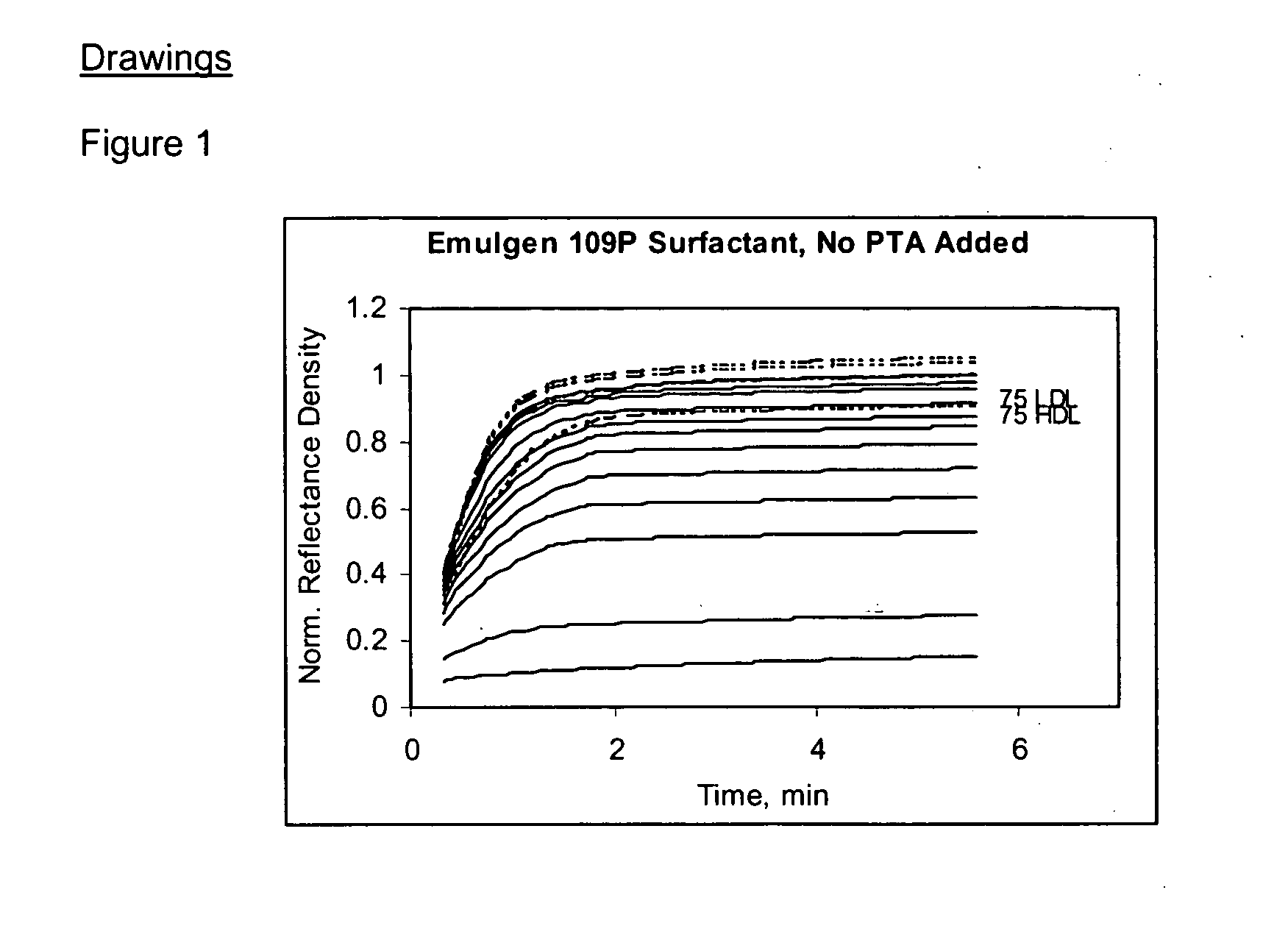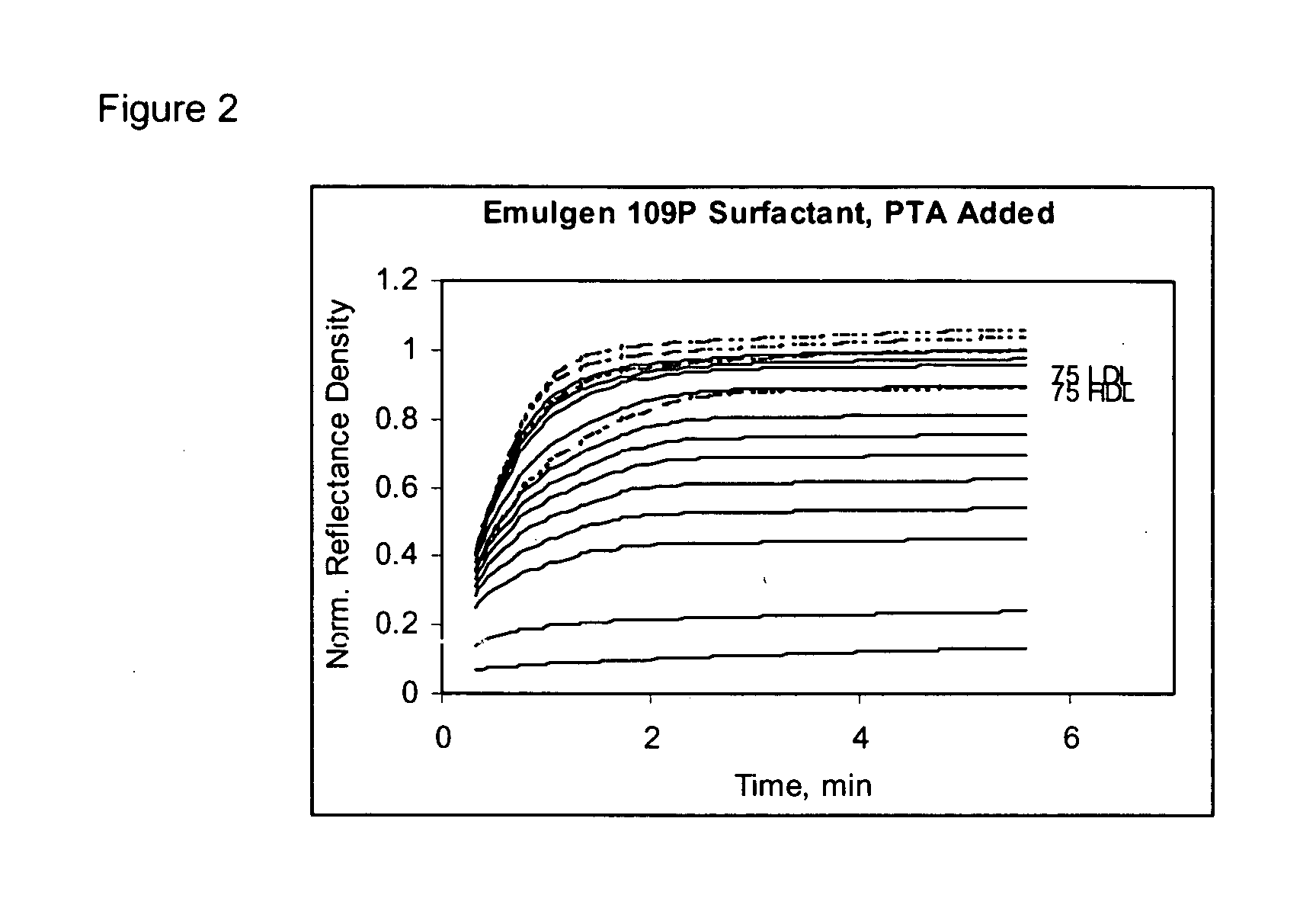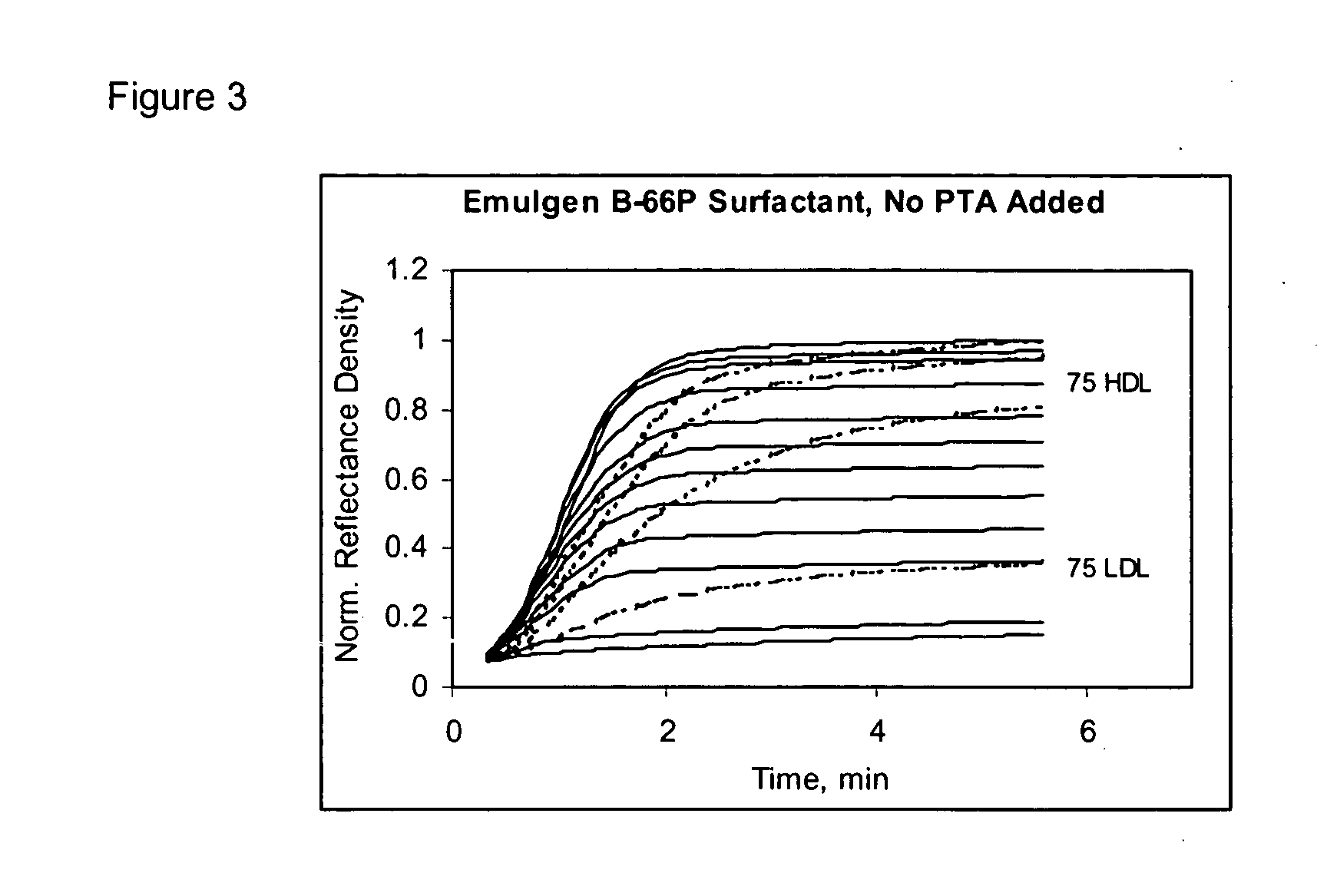One-step assay for high-density lipoprotein cholesterol
a high-density lipoprotein, one-step technology, applied in the direction of filtration separation, separation processes, instruments, etc., can solve the problems of insufficient overall selectivity and accuracy of the assay, inability to use this two-step elimination method in matsui et al., and inability to achieve single-step precipitation methods and selective surfactant methods
- Summary
- Abstract
- Description
- Claims
- Application Information
AI Technical Summary
Problems solved by technology
Method used
Image
Examples
example 1
Several surfactants were evaluated in a dry slide in order to evaluate their HDL selectivity. Below is an example of a multilayer analytical element, or dry slide, used in the evaluative process.
MgCl2 / SurfactantBaSO4 Spreadlayer / SurfactantI-100 AdhesionGel / COD / CEHGel / Dye / POD
example 2
Table 1 details the surfactants screened in the direct HDLC dry slide.
TABLE 1VendorSurfactantHLB NumberKao CorpEMULGEN A-6012.8Kao CorpEMULGEN B-6613.2Kao CorpEMULGEN A-9014.5Kao CorpEMULGEN 109P13.6Kao CorpEMULGEN 22014.2Dow ChemicalsTRITON X-10013.5
example 3
Serum based test fluids containing pure human HDL and LDL were reacted with HDL specific EMULGEN B-66 surfactant and non-HDL specific EMULGEN 109P surfactant in a dry slide assay. The kinetic response for each reaction was recorded and shown in FIGS. 1 through 4.
PUM
| Property | Measurement | Unit |
|---|---|---|
| density | aaaaa | aaaaa |
| hydrophile-lipophile balance | aaaaa | aaaaa |
| hydrophilic | aaaaa | aaaaa |
Abstract
Description
Claims
Application Information
 Login to View More
Login to View More - R&D
- Intellectual Property
- Life Sciences
- Materials
- Tech Scout
- Unparalleled Data Quality
- Higher Quality Content
- 60% Fewer Hallucinations
Browse by: Latest US Patents, China's latest patents, Technical Efficacy Thesaurus, Application Domain, Technology Topic, Popular Technical Reports.
© 2025 PatSnap. All rights reserved.Legal|Privacy policy|Modern Slavery Act Transparency Statement|Sitemap|About US| Contact US: help@patsnap.com



